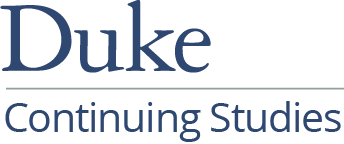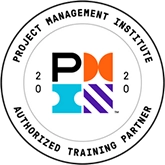Leading the Transformation to Sustainable High Performance
Become a High Performance Organization—Why bother?
Every organization is a collection of processes. Things get done (products manufactured or services delivered) via process. Customers will come to you or leave you because of their experiences with your processes.  Profitability is driven by process as well. Profit is the difference between what it costs to make and support a product or to deliver a service and what the customer pays for that product or service. If we examine this critical equation, one perspective may suggest profits could be increased by raising the price of goods or services to customers. This is usually not the best way to increase profit, especially if you have price-based competitors. So let’s look at the other side of our profit equation, the production/delivery and support of goods and services. These processes consume time and money. Accordingly, improving critical work processes is the “Promised Land of Profitability.”
Profitability is driven by process as well. Profit is the difference between what it costs to make and support a product or to deliver a service and what the customer pays for that product or service. If we examine this critical equation, one perspective may suggest profits could be increased by raising the price of goods or services to customers. This is usually not the best way to increase profit, especially if you have price-based competitors. So let’s look at the other side of our profit equation, the production/delivery and support of goods and services. These processes consume time and money. Accordingly, improving critical work processes is the “Promised Land of Profitability.”
This is hard to believe but the average business process contains a whopping 80% of something called “Non-Value-Added Activity” (NVA). NVA is any step in a process that adds time to delivery, which the customer didn’t request nor does nothing to aid in the production of a product or the delivery of a service. Much NVA can be classified as waste.
 The identification and elimination of NVA increases the efficiency of workflows. This is optimizing operational efficiency. Ridding workflows of unnecessary NVA is a great way to increase profitability. Streamlining operations increases process efficiency by definition. However, improving critical work processes has the added bonus of increasing effectiveness. The elimination of NVA almost always reduces cycle time and cost. Speedier delivery of goods and services at a reasonable price usually delights the customer. An additional boost in effectiveness comes with fewer errors and/or defects. Every step in a process is an opportunity for something to go wrong. Errors and defects frequently occur during Non-Value-Added tasks. Accordingly, eliminating these unnecessary steps diminishes exposure to errors or defects.
The identification and elimination of NVA increases the efficiency of workflows. This is optimizing operational efficiency. Ridding workflows of unnecessary NVA is a great way to increase profitability. Streamlining operations increases process efficiency by definition. However, improving critical work processes has the added bonus of increasing effectiveness. The elimination of NVA almost always reduces cycle time and cost. Speedier delivery of goods and services at a reasonable price usually delights the customer. An additional boost in effectiveness comes with fewer errors and/or defects. Every step in a process is an opportunity for something to go wrong. Errors and defects frequently occur during Non-Value-Added tasks. Accordingly, eliminating these unnecessary steps diminishes exposure to errors or defects.
Another compelling reason to optimize your operations is that it works. I have had the opportunity to function as an internal operations consultant in an organization for seven years. During that period we studied and improved dozens of workflows. We were able to reduce the number of steps in existing processes by an average of 62%. My experience with people receiving fundamental instruction in process analysis and applying that newly acquired knowledge to business processes is an astonishing 50% reduction in the number of steps with corresponding decreases in cycle time. Customer satisfaction was always measurably improved.
Any business owner worth his/her salt would be delighted to think that there was an ongoing effort to in his/her organization eliminate waste, cost, rework, cycle time, delays, rework, customer complaints, errors, rework and scrap. Additionally, this effort would increase morale, profitability, customer retention/satisfaction, capacity, organizational reputation and give an organization the competitive edge. An organization that continuously optimizes its processes and gets the aforementioned results is said to be high performance. Accordingly, for decades manufacturing and service organizations have been on a worldwide quest to find the “Holy Grail” of sustainable high performance.
The History of the Quest for High Performance
Almost every history teacher has said at one time or another, “"Those who do not study history are doomed to repeat it.” The history of the quest for high performance is no exception to this tried and true adage. Many of the reasons the “Holy Grail” of a sustainable a high performance methodology eludes businesses worldwide lies in the history of the attempts to achieve this worthwhile goal. So here we go.
The logic of improving operations has not escaped successful corporate leaders. Yet finding a model which can stand the test of time has become the "Holy Grail" for many intelligent and well intended leaders. Ever since before the turn of the 20th century methodologies and sets of effective tools come and go in a seemingly never ending stream.
Fredrick Winslow Taylor was the father of it all. Taylor started to study process in the late 1800s and coined the phrases of “Scientific Management” and “Time Study.” Taylor introduced the concepts of controlled experimentation, using observation in conjunction with stop watches to study process and implement standardization with great results. The unions of that era were not delighted with the methods developed by Taylor. Taylor and stopwatches were not welcome in unionized industrial America. The unions had good reason to take this position. Taylor’s methods had become a great way for business owners to increase profit margins by substantially reducing labor costs through reductions in the workforce. From the outset the optimization of operations seemed to be good for business owners and bad for workers.
Frank and Lillian Gilbreth were associates of Taylor and made enormous contributions in the area of studying human motion in the execution of process. The Gilbreth’s frequently filmed people working and would study the film frame-by-frame to identify waste and try to determine how to best improve the process. The contributions of Fredrick W. Taylor, Frank and Lillian Gilbreth generated results that were both stunning and legendary. The Frank and Lillian Gilbreth studied bricklayers at Kelly Brick and raised the production (bricks laid per day for an individual brick layer) from 1,000 to 2,700. Taylor was able to optimize the process of shoveling at Bethlehem Steel works and reduced the number of workers doing that process from 500 to 140.Understandably, results like these created a demand for people able to generate similar results. This demand gave birth to a new academic area of focus called “Industrial Engineering.” It also led to a new profession called “Efficiency Experts.”
"Efficiency Experts” had their heyday from the 1920s through the 1960s. By this time American business had a large percent of white collar jobs. Fortunately for business owners and “Efficiency Experts” the methods that worked so well in the factories of America were directly transferable to the white collar workplace. Most “Efficiency Experts” were very good at their jobs. Unfortunately, many of these talented professionals envisioned their job function as cutting the workforce to increase the profits of business owners. The presence of an “Efficiency Expert” in the workplace would generate, fear and mistrust.
Workers had to develop survival techniques. Overt resistance or failure to cooperate with Efficiency Experts would almost certainly result in a “Pink Slip.” Accordingly, workers developed a more “Passive Aggressive” way to resist process optimization. Workers would frequently slow down the work pace when the “Efficiency Experts” were observing or timing the workers. By providing the experts with faulty data through observation and/or interview the recommendation outputs were flawed and ineffective. The “Efficiency Experts” went the way of the dinosaurs and the dodo bird. The “Efficiency Experts” have left a legacy of fear, mistrust and bad blood between managers and the workforce around process improvement. That legacy still haunts operations improvement efforts and creates a barrier to high performance.
Efforts to achieve increased effectiveness and efficiency have come and gone over the past 100 years. Countless millions of dollars have been spent in the quest for the "Holy Grail of operational high performance." Techniques to include Work Simplification, Total Quality Management, Process Reengineering, Six Sigma and most recently, LEAN Management generate much interest on the part of business owners and top management. Frequently, initial results are impressive and encouraging. However, the optimization efforts lose momentum, falter and eventually stop. It is not unusual for this entire cycle to occur in the first year. It is not uncommon for an organization to cycle through a number of these programs. The workforce living through these implementation cycles seem to know the outcome of these programs almost as if it were a foregone conclusion. Many in the workforce call the latest attempt to attain high performance status as the, "Program Du Jour." While top management gets enthused at the beginning of the cycle the workforce thinks, "We will wait this out and it will go away." In many respects it becomes a self-fulfilling prophecy.
How Can Something that Seems so Good End so Badly?
Understandably, business owners and top managers have become frustrated and disillusioned with repeated failures to capture the Grail. But the possibility of becoming a high performance organization with all of the attendant rewards is so alluring that leaders will reach out and grab the brass ring offered by the next program only to see the cycle repeated once again. The only winners seem to be the management consultants and educational institutions both of whom seem to have a never ending supply of new and exciting approaches with catchy names queued up ad infinitum each promising the attainment of sustainable high performance.
I have been actively involved in operations optimization for the past 30 years. During that time many approaches have come and gone. One of the benefits of being in this field is learning to do root cause analysis when trying to solve a problem. Root cause analysis keeps focus on the actual problem that causes a troubling effect or symptom. Failure to do root cause analysis will keep an inappropriate focus on the effect/symptom generated by the actual problem. We believe that may be the case with the quest for sustainable high performance.
Let’s say an organization wanted to reach high performance status during the 1980s. Like many organizations of that era with a similar goal the leadership in the organization decides to invest in a Total Quality Management (TQM) program. After spending thousands of dollars on TQM awareness training for everyone in the organization, forming and training a quality council, training and launching teams the organization experiences some encouraging successes initially, but the program slowly fades to black over time. Obviously, TQM was a bad idea. The problem must have been TQM! What happened is that the failure to sustain the TQM program became the fault of the methodology that we selected. In other words we focused on the symptom i.e. the failure of TQM as opposed to the underlying organizational root cause issues that allowed that failure to occur.
A few years later the leadership of the organization hears about Reengineering. This approach is implemented with the best of intentions and comes to the same end after repeating the TQM cycle. Now the organization is implementing LEAN Management Techniques. Will this be the salvation of the organization or will this nasty and costly cycle repeat itself once again? How do you think the workforce thinks the latest experiment will fair? And the beat goes on!
Where is the Problem?
Let’s start where the problem is not. It is not with the methodology that was selected. We have studied them all and they all work well. Some work better than others in different situations or types of organizations. The tools of Work Simplification and or TQM would work as well today as they did when those respective methodologies experienced their 15 minutes of fame. All of these methodologies have a time tested set of process improvement tools that will optimize organizational effectiveness and efficiency. Frequently, these tools are paired up with an overarching problem solving methodology. This is good too. They all advocate root cause analysis and customer focus. In fact all of these approaches can boast of amazing and measurable success stories from the field. The reason for this is that they all work just fine.
So where is the problem? Another benefit of doing repeated root cause analysis is understanding that there is rarely “A Problem” causing a major negative effect. More often than not there are MULTIPLE root cause problems that make an undesired effect (such as the failure to attain sustainable high performance) occur. Failure is usually only a bad thing if someone does not learn from it. Through the years we have conducted post mortem examinations on programs that have failed. What we have found is that there are usually multiple root causes for non-sustainability of these programs. The reasons are not entirely identical in every instance nor do they carry the same weight of importance in contributing to the demise of the program.
Knowing what these issues are will permit you to avoid unseen pitfalls and design and deploy a proactive approach to designing and deploying a successful approach to achieve high performance status. The key issues which we have identified are:
- Knowing how to lead the transformation to sustainable high performance
- Understanding, accepting and managing resistance to change
- Preparing your organizational culture for the transition to sustainable high performance
- Planning program deployment and monitoring progress and obstacles
- Communicating effectively before during and after the transformation
Transforming any organization to sustainable high performance status is not like toggling a light switch. It is the result of deliberate and focused effort on the part of organizational leadership. The five elements listed above constitute the foundation to support high performance efforts. Without these elements in place even the best high performance initiative may fade to black in fairly short order.
About the Author:
Gerry Bruno, Trainer and Consultant for Corporate Education Group and President and Founder of Gerard Bruno Associates, started his process improvement career in 1979. At that time, he was tasked with starting an internal Business Process Improvement Consultancy which led to the development of a program that reduced the number of steps in existing work flows by an average of 62%; in addition to this, Gerry also created the WIN (Work Improvement Now) Demonstration Project, a 3-day training program that routinely reduces troublesome processes by an average of more than 50%. Gerry is also the co-developer of the Value-Added Transition Systems (VATS) Graphical Process Improvement Software System.


